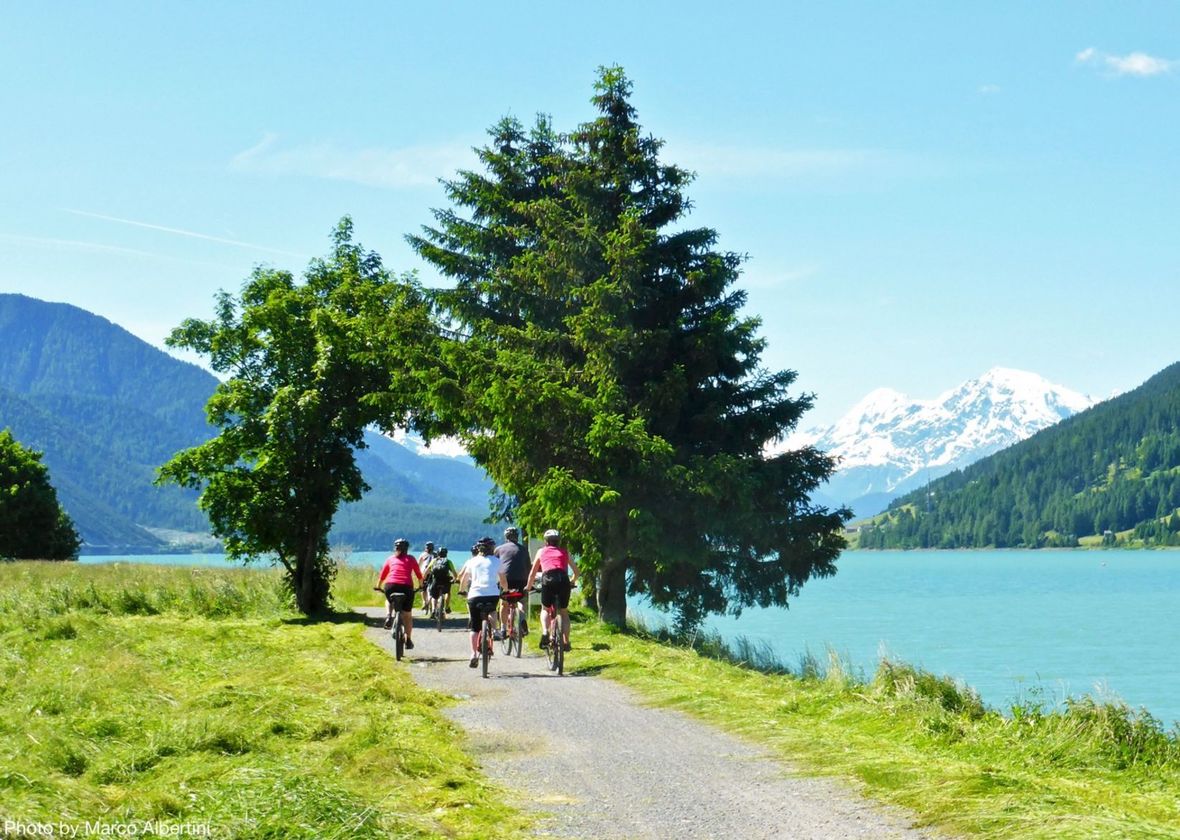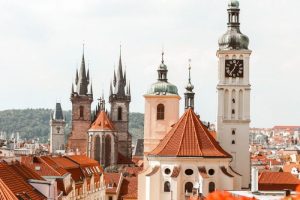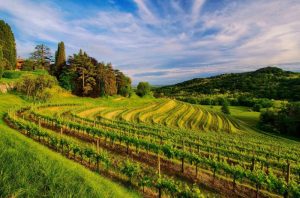
Embark on a thrilling journey through Europe on your bike with cycling tours taking the spotlight. Discover the diverse landscapes, top countries, and benefits of this unique way to explore the continent.
Cycling Tours in Europe

Cycling tours in Europe have become increasingly popular among travelers seeking a unique and active way to explore the continent. The combination of stunning landscapes, rich cultural heritage, and well-developed cycling infrastructure make Europe an ideal destination for cycling enthusiasts.
Landscapes and Terrains
Europe offers a diverse range of landscapes and terrains that cater to cyclists of all levels. From the rolling hills of Tuscany to the rugged coastline of Ireland, cyclists can enjoy a variety of scenic routes that showcase the natural beauty of the continent.
Top European Countries
- France: Known for iconic routes like the Tour de France, France offers cyclists a mix of challenging mountain climbs and picturesque countryside.
- Italy: Home to the Dolomites and the Amalfi Coast, Italy provides cyclists with breathtaking views and delicious cuisine along the way.
- Netherlands: With its flat terrain and extensive network of cycling paths, the Netherlands is a cyclist’s paradise, especially in cities like Amsterdam.
- Spain: From the Pyrenees to the beaches of Costa Brava, Spain offers diverse landscapes and vibrant culture for cyclists to explore.
Benefits of Cycling Tours
Choosing cycling tours as a way to explore Europe comes with a multitude of benefits. Not only does it allow travelers to experience the destination at a slower pace, but it also promotes physical activity and a deeper connection with the local culture. Additionally, cycling tours often provide opportunities to interact with fellow cyclists and create lasting memories along the way.
Spiritual Journeys
Spiritual journeys offer a unique experience compared to traditional vacations, focusing on inner exploration, personal growth, and self-discovery rather than just leisure and sightseeing.
Popular Destinations for Spiritual Journeys in Europe
- Camino de Santiago, Spain: Known for its ancient pilgrimage route, offering a transformative journey for walkers and cyclists alike.
- Glastonbury, England: A mystical town known for its spiritual energy, ancient sites, and connection to Arthurian legends.
- Assisi, Italy: Home to the tomb of St. Francis, this peaceful town is a popular destination for spiritual seekers.
Significance of Spiritual Journeys in Personal Growth
Spiritual journeys provide individuals with an opportunity to reflect, heal, and connect with their inner selves. They can lead to profound insights, emotional healing, and a deeper sense of purpose in life.
Unique Perspective Offered by Spiritual Journeys
Spiritual journeys allow travelers to experience a destination in a more profound and meaningful way. By focusing on inner exploration and personal transformation, these journeys offer a deeper connection to the places visited and a greater understanding of oneself.
Remote Destinations
When it comes to exploring Europe off the beaten path, there are numerous remote destinations that offer a unique and tranquil experience for travelers looking to escape the crowds and immerse themselves in solitude.
Ideal Remote Destinations in Europe
Europe is home to a plethora of remote destinations that are perfect for those seeking solitude and tranquility. Some of the top picks include:
- The Faroe Islands: Located between Iceland and Norway, this archipelago offers stunning landscapes, rugged cliffs, and a peaceful atmosphere.
- The Scottish Highlands: With vast wilderness, pristine lochs, and historic castles, the Scottish Highlands provide a remote escape for nature enthusiasts.
- The Albanian Riviera: This hidden gem along the Adriatic Sea boasts secluded beaches, charming villages, and a relaxed pace of life.
The Appeal of Remote Destinations
Visiting remote destinations in Europe appeals to travelers who are looking to disconnect from the hustle and bustle of everyday life. The solitude and tranquility offered by these off-the-beaten-path locations provide a sense of peace and rejuvenation that is hard to find in popular tourist spots.
Tips for Traveling to Remote Destinations
Before embarking on a journey to a remote destination in Europe, it’s important to:
- Research the area thoroughly to understand the local customs and culture.
- Pack essentials like water, snacks, and a map in case of limited services in remote areas.
- Inform someone of your travel plans and expected return time for safety purposes.
Unique Experiences in Remote Destinations
Remote destinations in Europe offer a range of unique experiences that set them apart from popular tourist spots, such as:
- Encountering untouched natural beauty and wildlife.
- Interacting with locals and experiencing authentic traditions.
- Participating in outdoor activities like hiking, biking, or stargazing without the crowds.
Theme Park Vacations

Theme parks in Europe have evolved over the years to become popular destinations for tourists seeking fun and entertainment. With a wide variety of attractions, rides, and shows, theme parks offer a unique experience that appeals to visitors of all ages.
Top Theme Parks in Europe
- Disneyland Paris – Known for its magical atmosphere and iconic characters, Disneyland Paris is a favorite among families and Disney fans.
- Europa-Park – Located in Germany, Europa-Park is the largest theme park in Europe and offers a mix of thrilling rides and cultural experiences.
- Tivoli Gardens – Situated in Copenhagen, Tivoli Gardens is one of the oldest amusement parks in the world and is known for its charming gardens and historic rides.
Theme Park Vacations vs. Other Travel Experiences
Theme park vacations in Europe offer a different type of experience compared to other travel experiences. While cultural tours and outdoor adventures focus on exploration and relaxation, theme park vacations provide a mix of entertainment, adrenaline-pumping rides, and immersive themed environments. They are perfect for families looking to create lasting memories and have a fun-filled vacation.
Tips for Families Planning a Theme Park Vacation in Europe
- Plan ahead and book tickets in advance to avoid long queues.
- Check the park’s website for any special events or shows happening during your visit.
- Pack comfortable clothing and shoes for a full day of walking and exploring.
- Consider staying at a hotel near the theme park to maximize your time at the park and avoid long commutes.
- Set a budget for souvenirs, food, and other extras to avoid overspending during your vacation.
Private Jet Travel
Private jet travel in Europe offers a level of luxury and convenience that is unmatched by commercial airlines. Travelers who opt for private jet travel enjoy exclusivity, comfort, and flexibility that cater to their specific needs and preferences.
Luxury and Convenience
Private jets provide travelers with personalized service, privacy, and comfort throughout their journey. From spacious cabins equipped with luxurious amenities to gourmet catering options, private jet travel ensures a seamless and enjoyable travel experience.
Benefits for Travelers
Exclusivity
Private jet travel allows travelers to avoid crowded airports and long security lines, providing a more private and personalized travel experience.
Comfort
With ample legroom, plush seating, and personalized service, private jet travel offers unparalleled comfort for passengers.
Flexibility
Private jets allow travelers to customize their itinerary, departure times, and destinations according to their preferences, saving time and offering convenience.
Popular Routes and Destinations
Popular routes for private jet travel in Europe include:
- London to Paris
- Geneva to Nice
- Rome to Ibiza
- Zurich to Mykonos
These routes are frequented by travelers seeking convenience, exclusivity, and luxury during their European travels.
Environmental Impact and Sustainable Alternatives
While private jet travel offers luxury and convenience, it also has a significant environmental impact due to high fuel consumption and carbon emissions. Travelers concerned about sustainability can explore alternative options such as carbon offset programs, eco-friendly aircraft, or choosing commercial flights with lower emissions.
Luxury Train Journeys
Luxury train journeys in Europe offer a unique way to experience the continent’s stunning landscapes and rich history while traveling in style and comfort. These journeys provide travelers with a luxurious and leisurely way to explore multiple destinations without the hassle of airports or long road trips.
Different Luxury Train Services in Europe
- The Venice Simplon-Orient-Express: Known for its iconic blue and gold carriages, this train offers a glamorous journey reminiscent of the golden age of travel.
- The Royal Scotsman: Explore the Scottish Highlands in luxury aboard this train, which features elegant cabins, gourmet dining, and breathtaking views.
- The Glacier Express: Travel through the Swiss Alps on this scenic train journey, crossing over 291 bridges and passing through 91 tunnels.
Unique Experiences and Amenities on Luxury Train Journeys
- Spacious and elegantly designed cabins with en-suite bathrooms and luxurious bedding for a comfortable night’s sleep.
- Fine dining experiences featuring gourmet meals prepared by onboard chefs using fresh, local ingredients.
- Observation cars with panoramic windows offering stunning views of the passing scenery, perfect for relaxation and socializing.
- Excursions and guided tours at various stops along the journey, allowing travelers to explore each destination in depth.
Tips for Travelers Considering a Luxury Train Journey through Europe
- Book early to secure the best cabins and dates for your desired journey, as luxury train trips often sell out quickly.
- Pack smartly and bring appropriate attire for both casual and formal occasions, as some luxury trains have dress codes for dining and social areas.
- Take advantage of onboard amenities and activities, such as spa services, lectures, and live music performances to enhance your journey experience.
- Prepare to disconnect from technology and immerse yourself in the beauty of the surroundings, as luxury train journeys offer a chance to unwind and enjoy the moment.
Agricultural Tourism
Agricultural tourism, also known as agritourism, is a form of tourism that involves visiting working farms, ranches, or vineyards to experience rural life and agricultural activities. This type of tourism has been gaining popularity in Europe as more people seek authentic and sustainable travel experiences.
Activities and Experiences
- Participating in farm activities such as harvesting fruits and vegetables, feeding animals, or milking cows.
- Taking guided tours of farms to learn about agricultural practices, food production, and sustainability.
- Enjoying farm-to-table meals made with fresh, local ingredients sourced directly from the farm.
- Staying overnight at farm stays or rural accommodations to immerse in the farming lifestyle.
Regions in Europe
- Tuscany, Italy: Known for its vineyards, olive groves, and agriturismos offering farm stays and wine tasting experiences.
- Provence, France: Famous for lavender fields, vineyards, and traditional Provençal cuisine experiences.
- Alentejo, Portugal: Offers cork oak forests, vineyards, and olive groves for agricultural tours and wine tastings.
Sustainable Practices
Agricultural tourism promotes sustainable agricultural practices by educating visitors about the importance of responsible farming methods, conservation of natural resources, and supporting local farmers. By engaging with sustainable agriculture through tourism, visitors can contribute to the preservation of rural landscapes, biodiversity, and traditional farming techniques.
Wine and Vineyard Tours
Wine and vineyard tours in Europe offer a unique and enriching experience for wine enthusiasts. Exploring the picturesque vineyards, tasting exquisite wines, and learning about the rich history and culture of winemaking in Europe are just a few highlights of these tours.
Famous Wine Regions in Europe
Europe is home to several renowned wine regions that attract wine lovers from around the world. Some of the popular wine regions for vineyard tours include:
- Bordeaux, France: Known for its prestigious red wines, Bordeaux is one of the most iconic wine regions in the world.
- Tuscany, Italy: Famous for its Chianti and Brunello di Montalcino wines, Tuscany offers stunning landscapes and historic vineyards.
- Rioja, Spain: Renowned for its bold and fruity red wines, Rioja is a must-visit destination for wine connoisseurs.
- Mosel, Germany: With its steep vineyard slopes along the Mosel River, this region produces exceptional Riesling wines.
Cultural and Historical Significance of Wine Production in Europe
Wine production in Europe has a deep-rooted cultural and historical significance. For centuries, winemaking has been an integral part of European traditions, shaping local customs, cuisines, and celebrations. The art of viticulture has been passed down through generations, contributing to the unique identity of each wine region.
Tips for Wine Enthusiasts Planning a Vineyard Tour in Europe
- Research and choose the wine regions that align with your taste preferences.
- Book vineyard tours in advance to secure your spot and avoid disappointment.
- Be open to trying new wines and expanding your palate during tastings.
- Engage with local winemakers and vineyard owners to gain insights into the winemaking process.
- Immerse yourself in the stunning landscapes and cultural heritage of the wine regions you visit.
Heritage Tourism
Heritage tourism plays a crucial role in preserving cultural traditions and historical sites in Europe. By attracting visitors to these key heritage sites, local communities can showcase their unique heritage while also generating revenue to support conservation efforts.
Key Heritage Sites in Europe
- The Colosseum in Rome, Italy: A symbol of ancient Roman architecture and history, attracting millions of tourists annually.
- The Acropolis in Athens, Greece: Home to iconic structures like the Parthenon, offering insights into ancient Greek civilization.
- The Alhambra in Granada, Spain: A stunning example of Moorish architecture and a UNESCO World Heritage Site.
Role of Heritage Tourism in Local Economies
Heritage tourism not only preserves historical sites but also boosts local economies by creating jobs and supporting small businesses. By attracting tourists, heritage sites can revitalize communities and promote sustainable tourism practices.
Supporting Heritage Conservation Efforts
Travelers can support heritage conservation efforts through responsible tourism practices. This includes respecting cultural traditions, following conservation guidelines, and donating to local heritage preservation organizations. By being mindful and respectful visitors, travelers can help ensure that these important heritage sites are preserved for future generations.
City Breaks
City breaks are short trips taken by travelers to explore and experience the vibrant culture, history, and attractions of European cities. These breaks are usually 2-4 days long, making them perfect for a quick getaway or weekend escape. City breaks have gained immense popularity among travelers due to their convenience, affordability, and the opportunity to immerse oneself in the unique charm of a city.
Must-Visit Cities in Europe
- Paris, France: Known for its romantic ambiance, iconic landmarks like the Eiffel Tower, and world-class cuisine.
- Rome, Italy: Rich in history with ancient ruins, stunning architecture, and delicious Italian food.
- Barcelona, Spain: Famous for its art and architecture, beautiful beaches, and vibrant nightlife.
- Prague, Czech Republic: A fairy-tale city with historic castles, charming streets, and a lively arts scene.
- Amsterdam, Netherlands: Picturesque canals, historic museums, and a laid-back atmosphere make this city a must-visit.
Comparing City Breaks with Longer Stays
City breaks offer a condensed experience of a city, allowing travelers to explore the highlights in a short amount of time. Longer vacation stays in Europe, on the other hand, provide a more in-depth immersion into the local culture, lifestyle, and off-the-beaten-path attractions. While city breaks are perfect for those with limited time, longer stays allow for a deeper connection with the destination.
Tips for Planning a City Break in Europe
- Research and prioritize attractions you want to visit to make the most of your time.
- Choose centrally located accommodation for easy access to major sights and transportation.
- Take walking tours or bike rentals to explore the city like a local and discover hidden gems.
- Indulge in local cuisine and try traditional dishes at authentic restaurants for a taste of the city.
- Immerse yourself in the culture by attending local events, markets, or festivals happening during your visit.
Last Recap
As we conclude our exploration of cycling tours in Europe, it’s evident that the continent offers a plethora of experiences for cycling enthusiasts. From picturesque landscapes to cultural immersion, these tours promise unforgettable adventures.
Question & Answer Hub
What makes cycling tours in Europe popular?
Cycling tours in Europe offer a unique way to explore the continent, combining adventure, fitness, and cultural immersion.
Which are the top European countries for cycling tours?
Countries like France, Italy, Spain, and the Netherlands are known for exceptional cycling tour experiences.
Why choose cycling tours to explore Europe?
Cycling tours provide a closer connection to the surroundings, allowing travelers to experience Europe in a more intimate and immersive way.
What are the benefits of cycling tours in Europe?
Benefits include physical fitness, exploration of diverse landscapes, cultural interactions, and a unique perspective on travel experiences.





